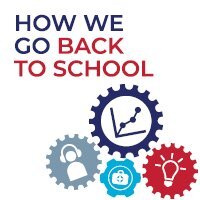School leaders and educators are facing pressures from all quarters when it comes to starting school this fall—whether it’s trying to make up for lost learning, navigating the logistical challenges of safely opening school buildings, or steering the political challenges of closing them. All of this is taking place against the backdrop of budget cuts brought on by the economic fallout from the pandemic.
With so many competing demands, some child-development experts are worried that students’ social, emotional, and mental well-being will be put on the backburner.
This could be a recipe for disaster.
Plowing ahead on core academics with a singular focus on making up for lost learning without addressing what students—and staff—are bringing with them to school ignores a basic reality: Children can’t process and retain new information if their brains are overwhelmed with anxiety.

District and school leaders are confronting difficult, high-stakes decisions as they plan for how to reopen schools amid a global pandemic. Through eight installments, Education Week journalists explore the big challenges education leaders must address, including running a socially distanced school, rethinking how to get students to and from school, and making up for learning losses. We present a broad spectrum of options endorsed by public health officials, explain strategies that some districts will adopt, and provide estimated costs.
Part 1: The Socially Distanced School Day
Part 2: Scheduling the School Year
Part 3: Tackling the Transportation Problem
Part 4: How to Make Remote Learning Work
Part 5: Teaching and Learning
Part 6: Overcoming Learning Loss
Part 7: Teaching Social-Emotional Skills
Up next: Equity Access
Full Report: How We Go Back to School
And these are anxious times for students.
A survey of 3,300 teenagers in June found that they are much more concerned than usual about their health and the health and financial stability of their families. Thirty percent of teens reported in the , a national nonprofit focused on youth, that they are more worried than normal about basic needs including food, medicine, and safety.
Over a quarter of teens said that they are losing more sleep, feeling more unhappy or depressed, feeling under constant strain, or losing confidence in themselves.
Forty percent said they have not been offered any social or emotional support by an adult from their school while their school buildings were closed last spring.
In a , a national nonprofit that surveys students, 50 percent of teens reported that feeling depressed, stressed, or anxious made it hard for them to learn virtually last spring.
Both surveys found that many of these challenges were more pronounced for students of color.
In order to make up for lost learning from the spring, schools must attend to students’ social, emotional, and mental health needs, say experts. This may very well require a shift in thinking for some school leaders; social-emotional development is not in competition with academics, but rather a prerequisite for success.
Investing heavily in SEL early in the school year, will pay dividends later, experts say.
However, many districts are not be poised to do so. A nationally representative April survey by the Education Week Research Center found that just over a quarter of teachers, principals, and district leaders said their schools don’t normally teach social-emotional learning. Even among the districts that do, the approach may be far from comprehensive or in the early stages of development.
While adopting a comprehensive, evidence-based SEL curriculum is best, if a school doesn’t have one, that doesn’t mean it’s too late to introduce social-emotional learning.
There are ways to weave SEL into the school day, whatever form it takes, without overhauling established plans and adopting new SEL curricula. While it’s hard to teach children social and emotional skills while they are working remotely or sitting in classrooms where everyone is wearing a mask or six feet apart, it’s not impossible.
Simple routines of self-care and checking-in with students and colleagues can make a difference if educators invest in and stick with them.
Ensuring that students are connected to their peers and have strong supporting relationships with adults in school will go a long way toward helping them cope and get to a place mentally where they are ready to learn.
For students experiencing more severe trauma, using a can help meet students’ individual needs and leverage the personnel schools already have. Partnering with community organizations that provide mental health services can help fill in the gaps for districts short on school counselors, social workers, and psychologists.
Finally, it’s important for educators and students to step back and acknowledge the important life lessons students are gaining as a result of the pandemic that aren’t going to show up on a test or in a grade—such as time management, coping skills, and becoming more socially conscious of how their actions affect others.






